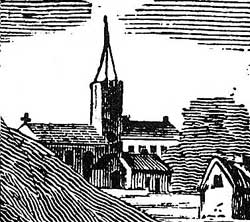|
TYPES OF PRINTS: RELIEF

Relief prints from the period are usually woodcut or wood-engraving prints. With this method, the surface of the wooden block is cut away, leaving the picture and text to be printed upstanding from the surface. This is just like the linocut which many children will have made at school.
During the Georgian period, the technique was used extensively for the production of popular prints and for reproducing prints within text or letterpress. Until the late 18th Century, the wood was usually used as a plank, that is along the grain. 
It was as well used for some high quality work, by an exceptionally skilled artist/printmaker called Thomas Bewick (1753 – 1828). He improved the method of cutting the print on the end grain, and this led to a wide use of the technique in the 19th Century for illustration.
The earlier prints are fascinating for their value as social comment. There was little pretension to this art – they were just there to tell a story. Perhaps just because they were so ‘cheap and cheerful’, these prints are not so commonly found as you might expect.
A good book discussing the wide range of subject matter found on these prints is Sheila O’Connell’s The Popular Print in England, British Museum Press, 1999.
For Thomas Bewick, Stephen Calloway’s English Prints for the Collector, 1980, has a very useful summary of his life and main publications.
email ross@georgianprints.co.uk
|